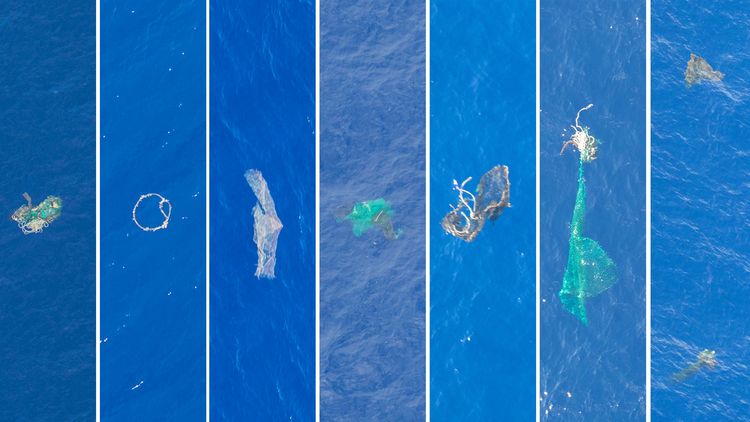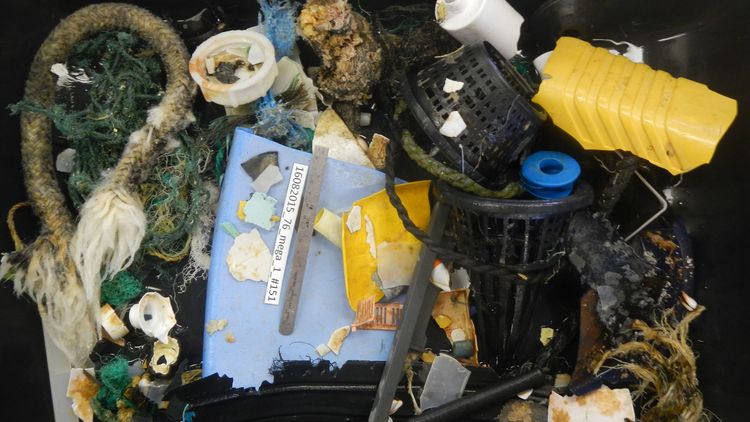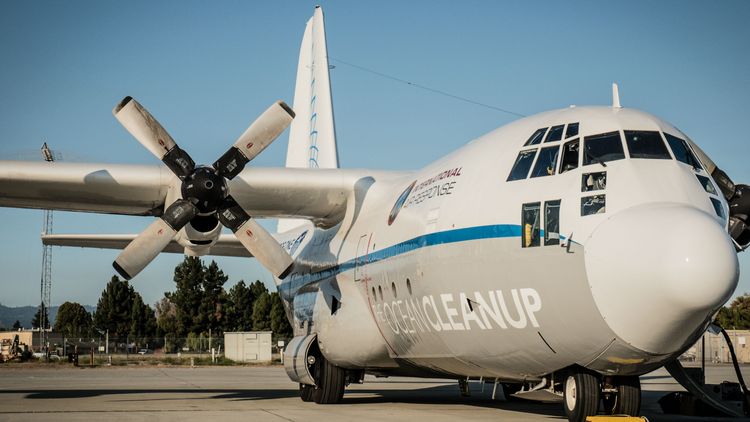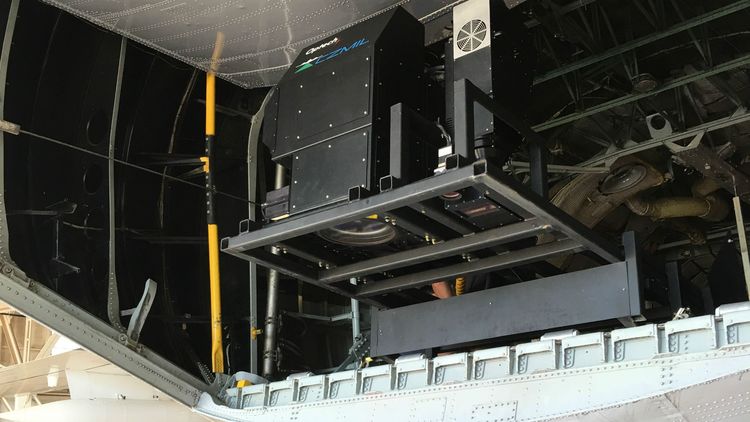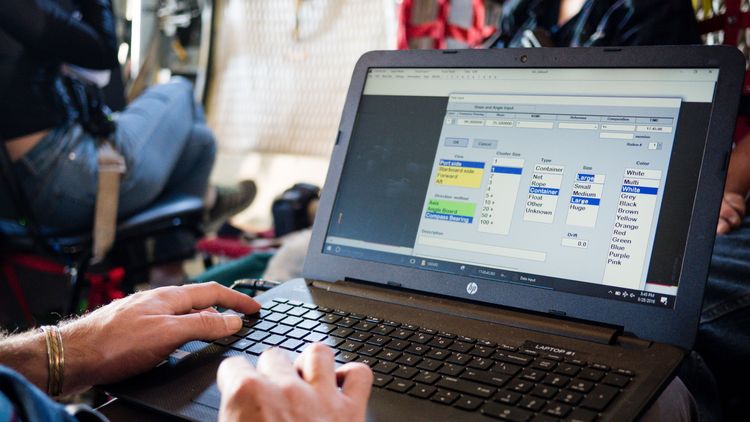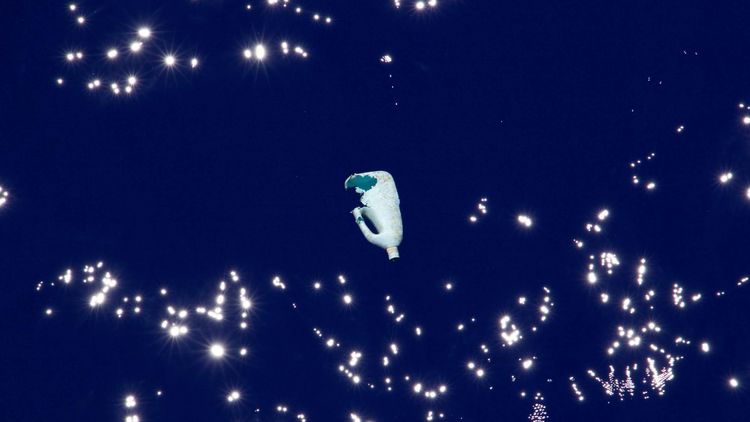Every year around ten million tonnes of plastic waste end up in the oceans. Soon it could be possible to monitor the precise location of the debris from satellites. Oldenburg scientists are working on a solution.
In the middle of the Pacific Ocean, roughly halfway between California and Hawaii, lies a remote patch of sea through which ships rarely pass. But all kinds of debris from modern civilisation can be found floating here: plastic bottles, toothpaste tubes, bags, flip flops, toys, crates, ropes and entangled fishing nets – as well as millions of tiny pieces of red, green, blue and white plastic of indeterminable origin. This huge swirl of trash, known as the “Great Pacific Garbage Patch”, consists of 1.8 trillion plastic items with a total weight of approximately 80,000 tonnes. Converging ocean currents have caused the debris to accumulate in the central North Pacific across an area three times the size of France, as the results of a study published in the journal Scientific Reports in March 2018 show.
We know more or less where the plastic waste is, but it constantly moves,” says Dr. Shungudzemwoyo Garaba of the University of Oldenburg’s Institute for Chemistry and Biology of the Marine Environment (ICBM). “If we could monitor the waste via satellite we would be able to obtain far more accurate information.” The data thus gathered could be useful both for clean-up operations and to help pinpoint the sources of the plastic waste.
Infrared fingerprint
Together with colleagues, Garaba, who is currently completing his Habilitation in the Marine Sensor Systems research group at the ICBM, has laid the groundwork for the automated detection of ghost nets (nets discarded by fishing boats) and other plastic waste from airborne platforms such as planes and drones using a kind of infrared fingerprint. The team, which includes ICBM director Prof. Dr. Oliver Zielinski, recently reported in the journal Environmental Science & Technology that plastics in the ocean can be clearly identified on the basis of their specific infrared light reflection characteristics.
Garaba and his fellow researchers analysed images and measurement data collected during a research campaign carried out by the Ocean Cleanup organisation. Founded in 2013, the mission of this project is to rid the oceans of plastic waste. In 2016 the organisation carried out two reconnaissance flights over the garbage patch between California and Hawaii to quantify and qualify the debris. In addition to a team of experts and standard camera equipment, the aircraft – a Lockheed C-130 Hercules that flew approximately 400 metres above sea level – was carrying a special infrared sensor that can separate light in the 900 to 2,500 nanometres wavelength range into the different “colours” of the infrared spectrum.
On the basis of the observations and photos made during these flights the team first of all determined the size, position, colour and type of the plastic items. The analysis of this data showed that large items such as ghost nets or plastic crates are generally easily discernible on photos in the visible range of the spectrum. “However, it’s sometimes difficult to distinguish them from algae, wood fragments, sun glints or waves,“ Garaba explains. Green pieces of plastic, for example, are easily mistaken for algae, and white debris can be confused with sea foam or light reflections.
Characteristic reflections
But as Garaba and his colleagues report in their study, the infrared light reflected by plastic particles floating on the sea surface is quite different from that reflected by other substances. The scientists analysed the signals from 150 larger pieces of plastic that had been pre-assigned to various categories such as ghost nets, ropes and plastic containers. They discovered that ocean plastic typically absorbs two specific bands of infrared light, and can be reliably identified on this basis. “Not only can we identify whether or not the material is plastic, but we can also distinguish between different types,” Garaba explains. The infrared signals create a sort of fingerprint that is specific to each type of material. “The recycling industry uses similar techniques in waste sorting plants,” points out the scientist, who advises “The Ocean Cleanup” on remote sensing technology. This new study provides the first proof of concept that remote sensing technology can be used to detect and quantify plastic waste in the ocean. On the basis of these findings scientists could for example develop software for the automated identification of plastic waste from satellites.
The first experiments in this direction are already under way. In another research project Garaba, Zielinski and Prof. Dr. Konstantinos Topouzelis of the University of the Aegean, based on the Greek island of Lesbos, were able to demonstrate that large pieces of plastic are visible from space. In June 2018 the team anchored three floating plastic islands, each ten by ten metres in size, off the coast of Lesbos. One of the islands consisted of plastic bottles, another of bags and the third of fishing nets. The researchers were able to analyse the images from various satellites in different wavelength ranges. “We were able to detect the plastic clusters on these images,” says Garaba.
Nevertheless, the researcher notes, monitoring accumulated plastic waste in the world’s oceans is just the first step towards solving the problem: “The best thing would be to stop the plastic pollution at its source, i.e. in the rivers.”

